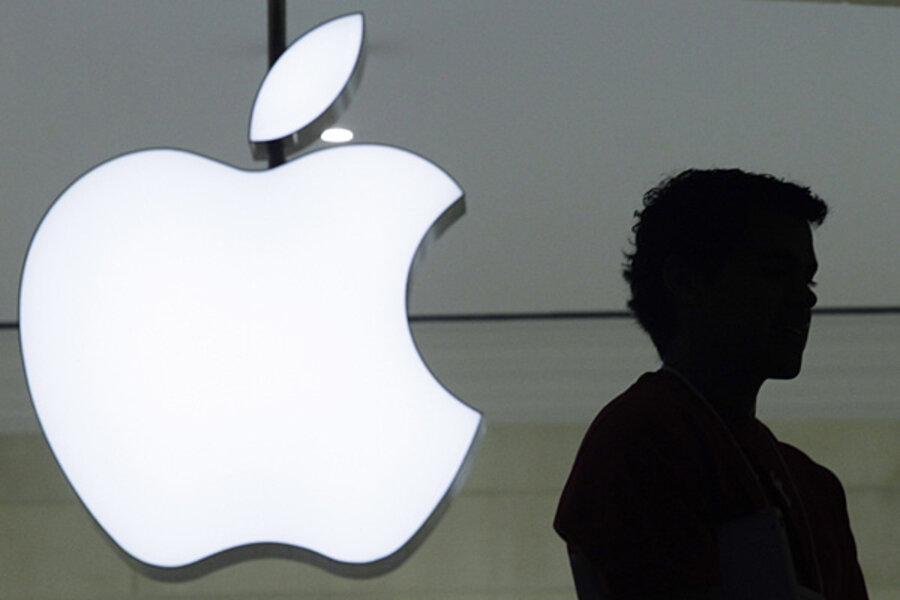Apple replaces AT&T in Dow Jones industrial average
Loading...
In the Dow's elite club, Apple is in and AT&T is out.
Apple will replace AT&T in the Dow Jones industrial average on March 19, the manager of the index announced early Friday.
It's not likely to impact the 30-stock index much, and has no effect on the fortunes of the two companies, but it's another victory of sorts for the popular and profitable iPhone giant.
The move cements Apple as "the gold standard of technology," says Daniel Ives, a financial analyst at FBR Research. "They've really become the modern day Wright Brothers of technology."
THE REASON
S&P Dow Jones Indices, the index manager, said it's making the move in response to a planned stock split for Visa, another member of the 119-year old barometer of the stock market. After its four-to-one stock split, Visa will wind up with a lower price. S&P said that would reduce the weight of the information technology sector in the Dow because Visa, a credit-card and payment-processing giant, counts as a tech stock. Adding Apple will help balance out this reduction.
TWEAKING THE INDEX
S&P Dow Jones Indices said the decision to fold in Apple won't alter the overall level of the index — which stood at 17,911 Friday afternoon, less than two percent below its all-time high.
S&P Dow Jones is casting the move as a sort of a housekeeping maneuver, a way to ensure that this most famous of stock-market barometers better reflects the U.S. economy and markets.
The switch was also not a reflection on its view of Apple.
"This doesn't mean we like the stock, or don't like the stock, or something like that," David Blitzer, chairman of the index committee at S&P Dow Jones, told The Associated Press.
CHALLENGES AT AT&T
While the Dow change wasn't triggered by anything AT&T did, it comes at a challenging time for the phone giant.
The nation's second-largest wireless carrier is facing pricing pressure from smaller rivals T-Mobile and Sprint in a competitive environment in which most Americans already have a cellphone.
Its stock has risen just 3.6 percent in the past 12 months. That compares with an 11 percent gain in the S&P 500. Apple, meanwhile, has jumped 68 percent.
To keep growing, AT&T has had to look beyond cellphones — to tablets and connected cars, for example. Adding a tablet to a phone plan gets AT&T another $10 in monthly service fees.
The Dallas-based company is also trying to wean customers off equipment subsidies and shift them toward installment plans in which they ultimately pay full price for a phone.
In its most recent quarter, AT&T booked a loss due to one-time expenses. But its revenue rose 4 percent as it added 1.9 million subscribers, double the year-ago quarterly increase.
AT&T has bounced in and out of the blue chip average over the Dow's long history. It first entered in 1916 as American Telephone & Telegraph, joining Central Leather, Studebaker and other industrial giants in an elite club of 20 companies. In recent times, AT&T was kicked out in 2004 only to return the following year when it merged with SBC Communications.
THE DOW STILL MATTERS
Created in 1896, the Dow is one of the oldest gauges of a stock wealth. When it was created, Grover Cleveland was U.S. president. Companies like the Pacific Mail Steamship were counted among its ranks.
The index only tracks 30 stocks. The Standard and Poor's 500, a rival gauge that reflects the performance of 500 stocks, is the one that professional investors watch most closely to see how their own portfolios are performing.
And ordinary investors haven't bothered much with the Dow either, judging from the money they've put into index funds that mimic its performance. Investors have just $13.6 billion in 12 Dow-based index funds, according to Morningstar. That compares with $4 trillion in 1,261 S&P indexes.
Still, the Dow can't be dismissed as a relic. It continues to be widely cited and isn't seen as wildly distorted.
One reason is that, for all its flaws, the Dow has largely mirrored the ups and downs of the much larger S&P 500.
In the past 12 months, for instance, the Dow has risen 9.2 percent. The S&P 500 has climbed 10.8 percent.
The last big Dow shake-up came in September 2013, when Goldman Sachs, Nike and Visa knocked out Alcoa, Bank of America and Hewlett-Packard.





